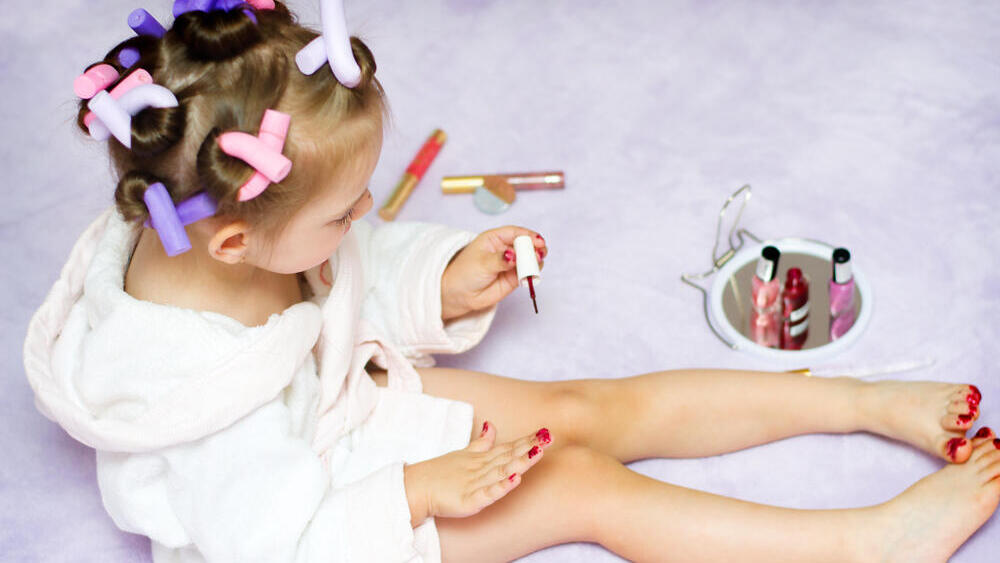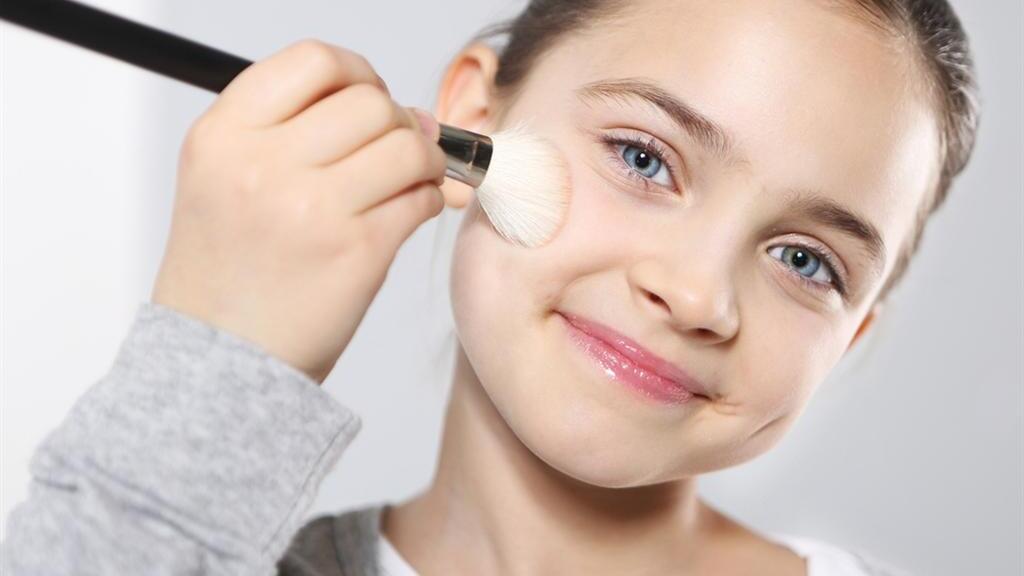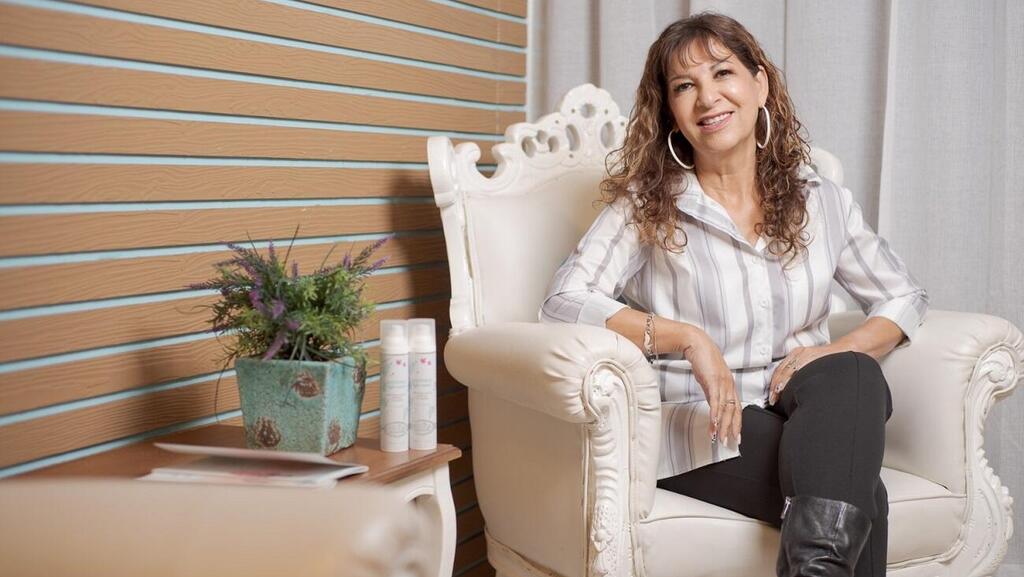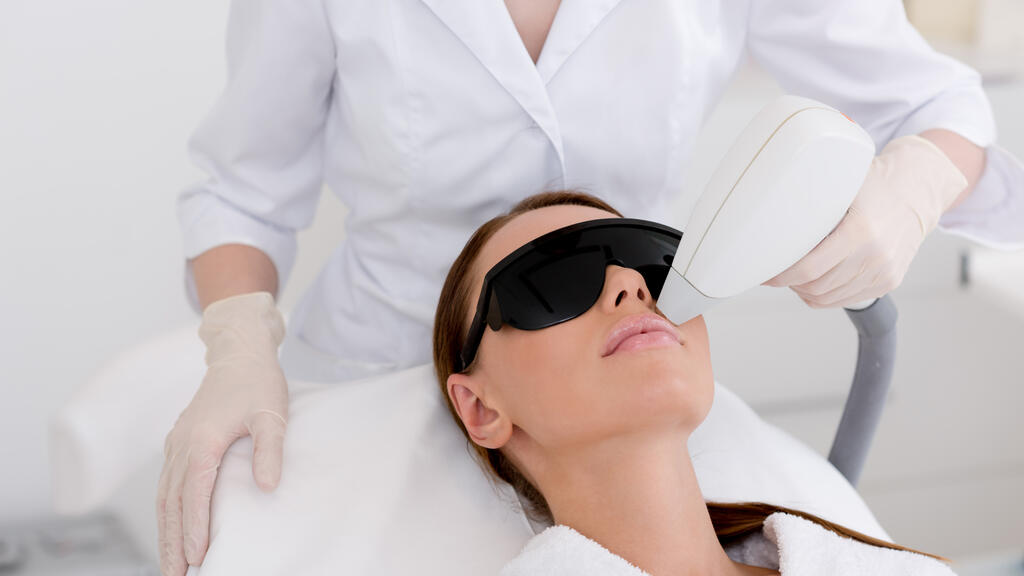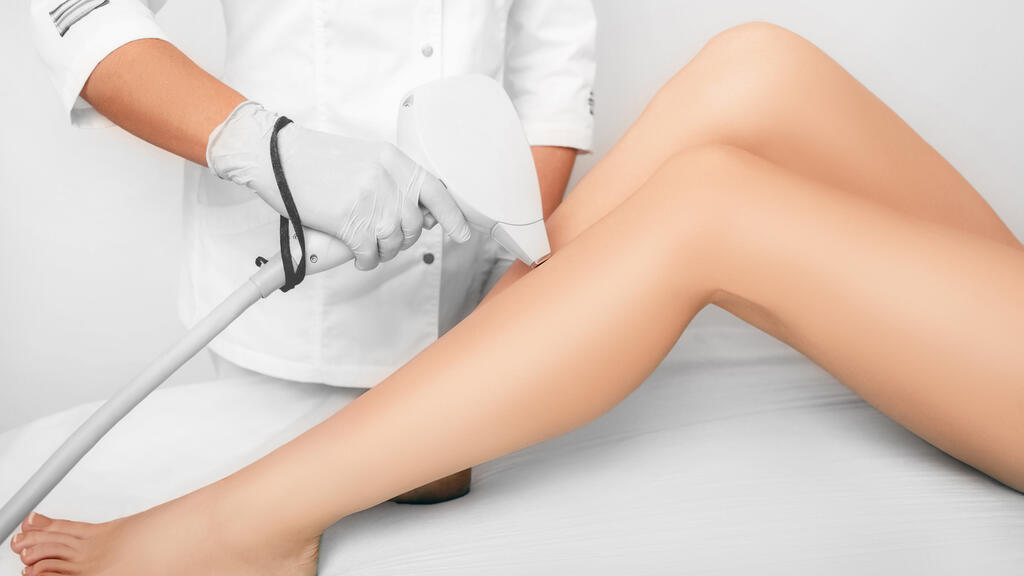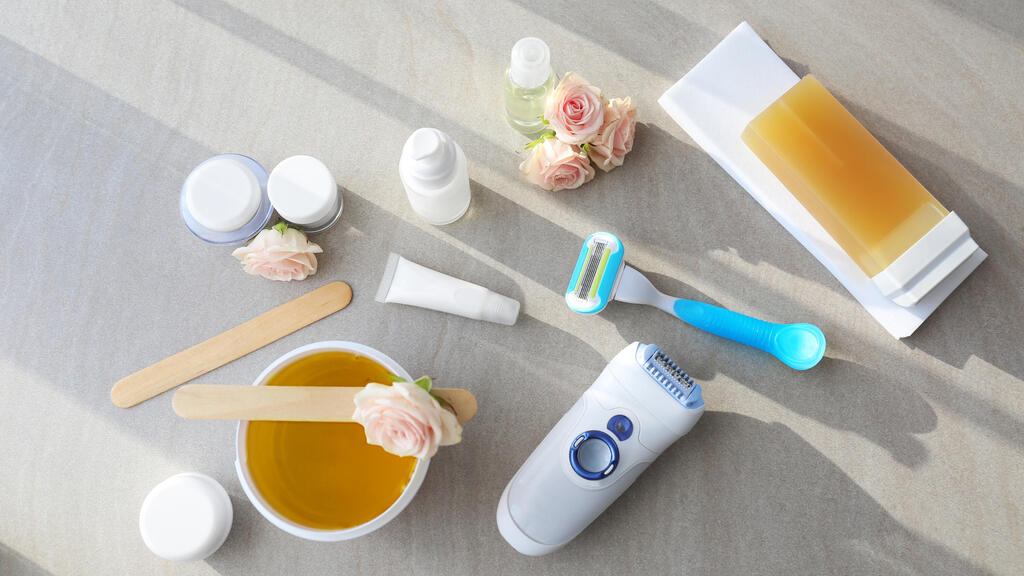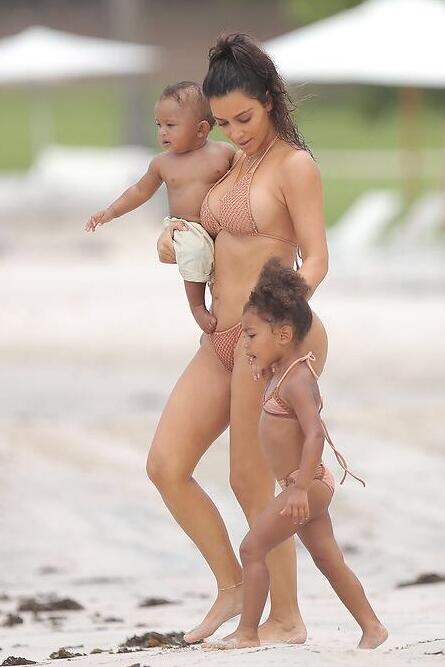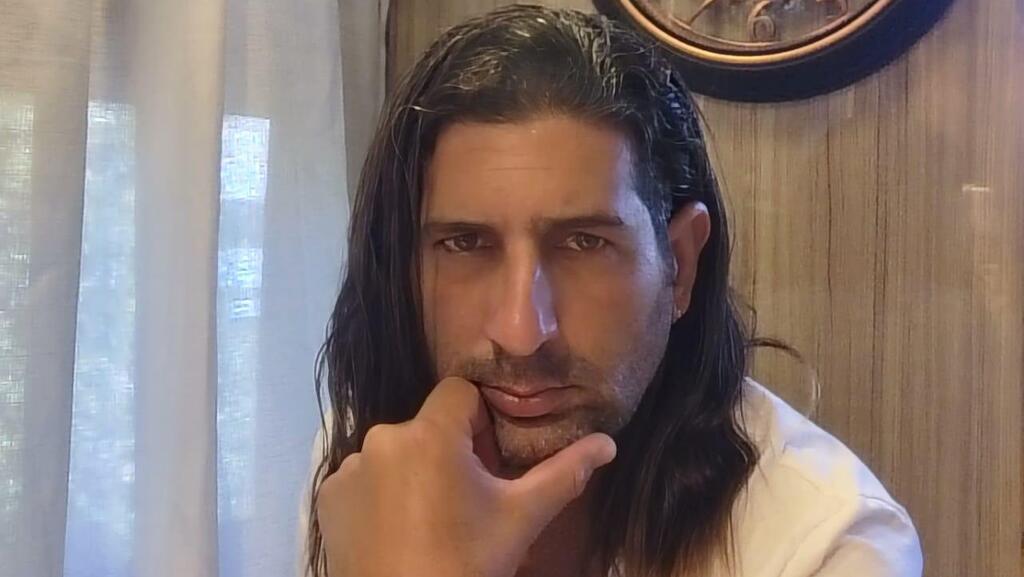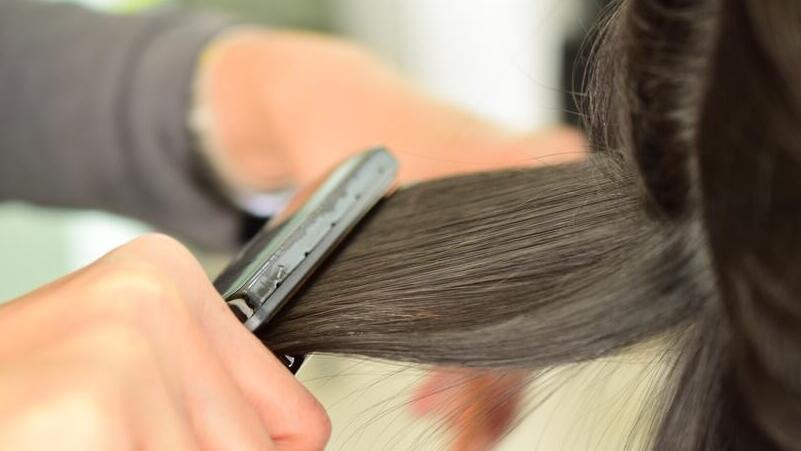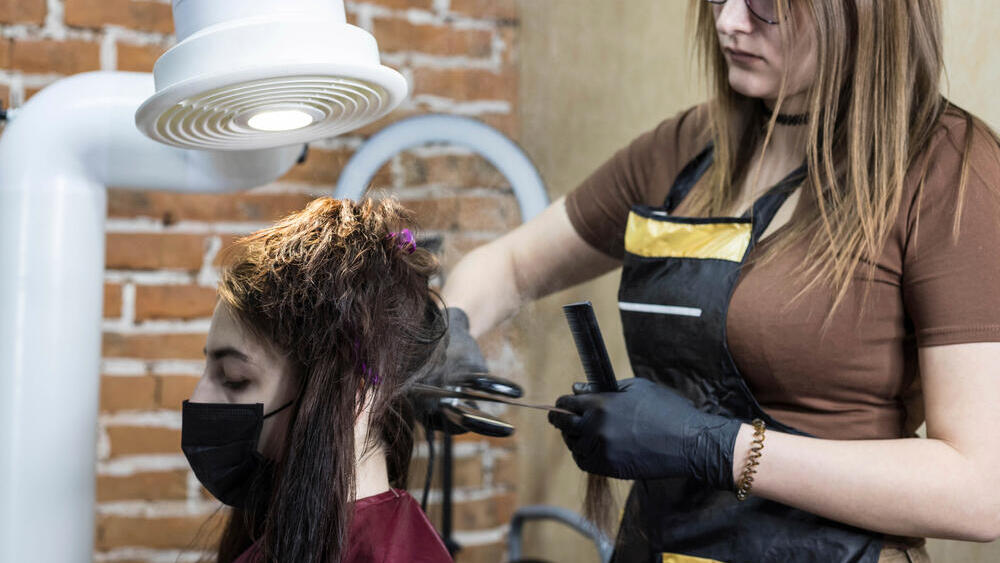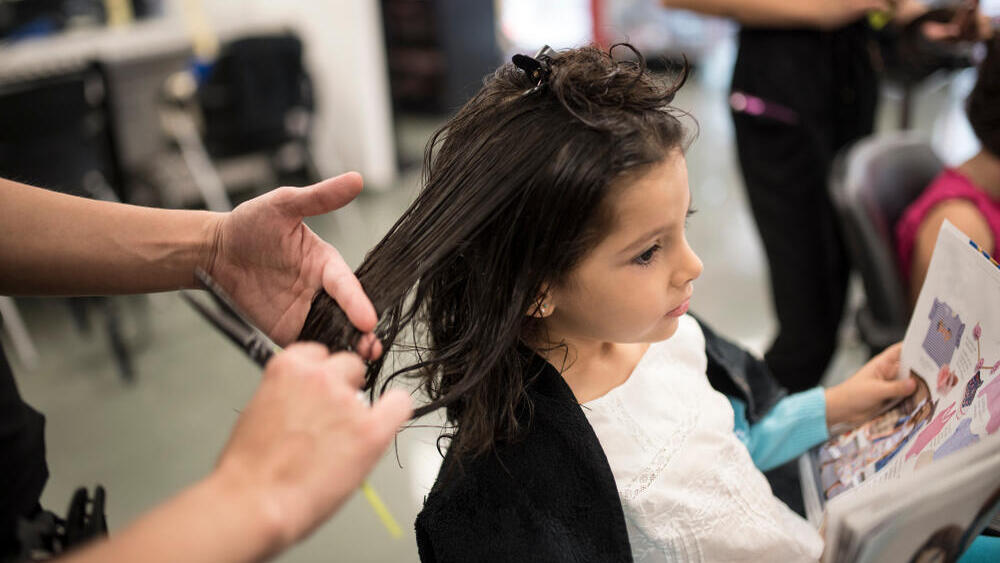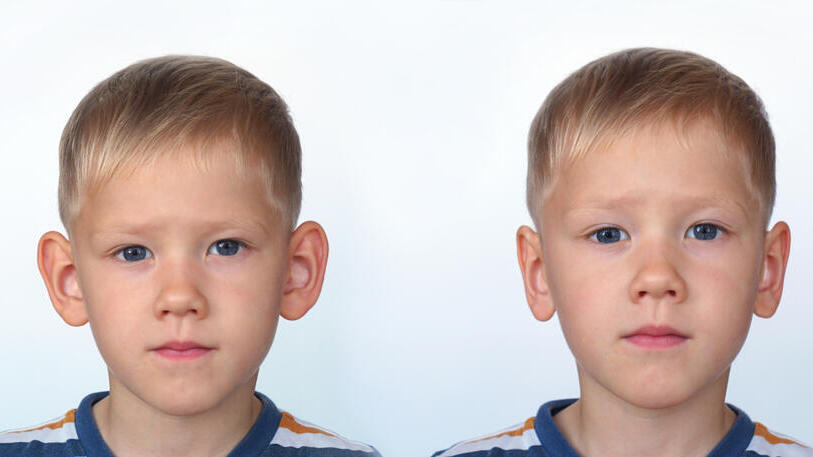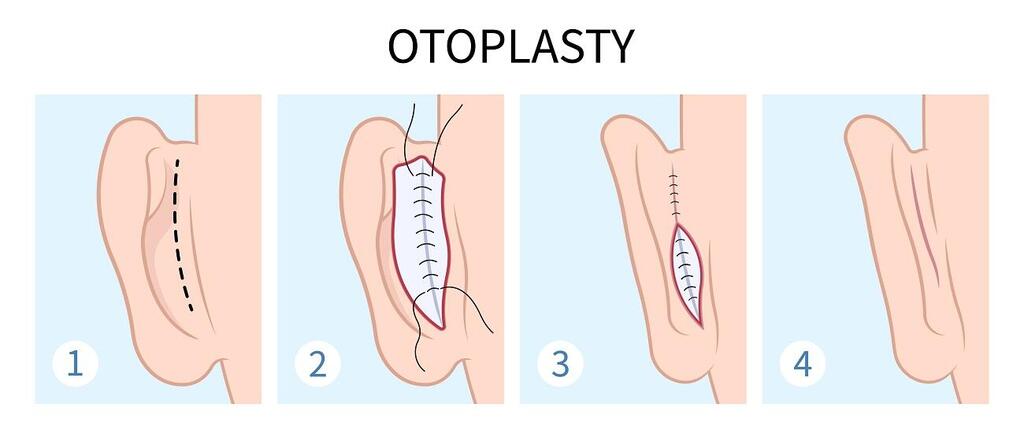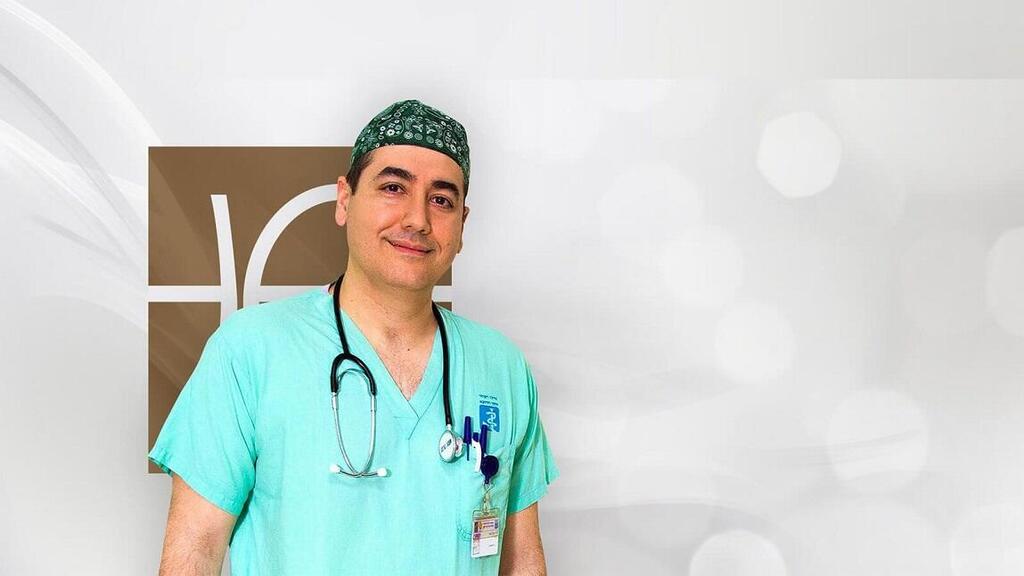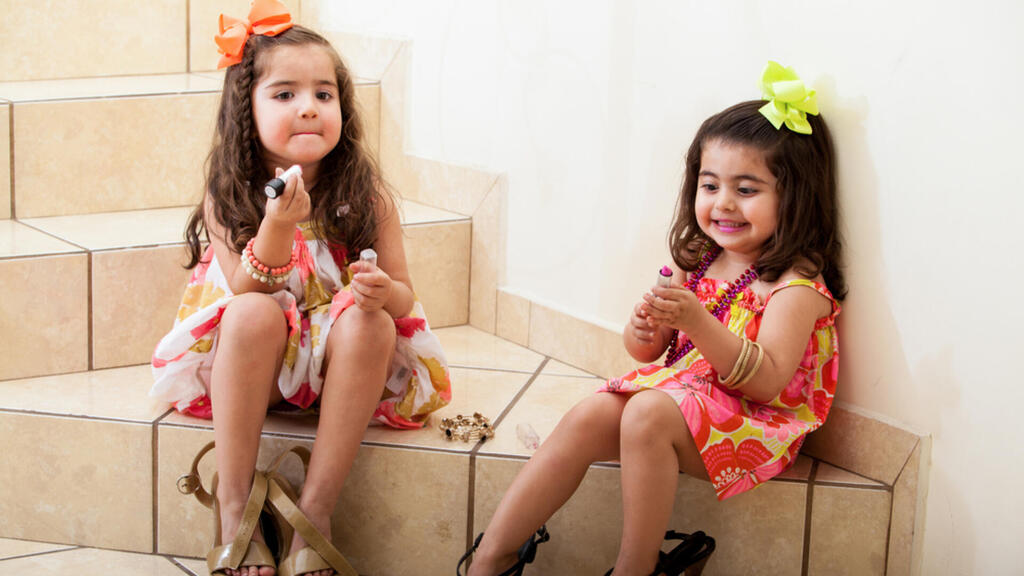Bliss Garcia from Texas was just two years old when she first asked for her eyebrows to be waxed. She simply watched her mother waxing her elder sister and asked to join the party. At first, her mother, 31-year-old Leah Garcia, refused. But, eventually the mother gave in after the little girl nagged her a bit more.
Bliss is now three and regularly participates in family “waxing day” when the women of the family all depilate together. You’d never know any of this if the mother hadn’t posted about it on social media app TikTok.
In a video that went viral in minutes, we see Leah place waxing strips between little Bliss’s eyes, and skillfully strip them. The text above the video provocatively read: “I don’t care! I don’t care! I'd rather y'all call me a bad mom before I let my 3-year-old walk around with a unibrow like my parents did!"
To no one’s surprise, the video spawned thousands of comments. The naysayers claimed that she was an abusive mother, that she had failed in her role as a parent, that she’s bringing down her daughter’s self-confidence, that instead of telling her not give a damn about what other people think, she’s introducing her tiny daughter to the cruel beauty industry.
To top it off, someone wrote: “Someone call social services!” Leah’s defenders, on the other hand, praised her sensitivity and understood her need to protect her daughter from hurtful comments in kindergarten, claiming that the girl would start plucking her eyebrows soon anyway, asking “what’s so bad about a little aesthetics?”
And really, what is so bad? In a world with an industry founded on low self-confidence about one’s appearance, nothing surprises us anymore. Manicures, pedicures, hair removal, make-up, slimming body suits, diets, work-outs, eye creams, cellulite creams, Botox for wrinkles, hyaluronic acid lip injections, push-up bras, vagina shaping surgery. The list goes on.
The beauty industry for centuries has aimed itself exclusively at women. But, it has recently started targeting new demographics: men who care about their appearance, and bullied schoolchildren who’ll do whatever it takes to adapt their appearance to the requirements of their environment. It could be laser hair removal, hair straightening or plastic surgery.
To be clear, we’re not talking about little girls wanting to feel grown-up for a moment and occasionally steal their mother’s lipstick from the dresser drawer. We’re also not talking about children’s medical procedures such as teeth-straightening, which also improve their appearance.
We’re talking about little girls (and boys) who conduct long-term (sometimes dangerous) medical procedures for no medical reason. As these procedures don’t come cheap, the little girls can’t really make any decisions on the matter as it’s the parents who pay thousands of shekels, accompany them, and sometimes pressure them into having the procedures at all.
Like in other western countries, the age of girls introduced to the beauty industry in Israel is cause for concern. Mothers are vociferous in their opinions – both for and against.
Although 30-year-old Moran (alias) from Holon doesn’t have children yet, she has no doubts about hair removal for girls. If she were to have a daughter who one day asks to have body hair removed, Moran would definitely allow it – and she has her reasons.
When she was in eighth grade, she dressed up as Bob the Builder for Purim. Carrying her mishloach manot (a Purim basket of gifts of food), she eagerly went to school in her costume.
But one of the children came up to her, inspected her costume from head to toe, and nastily commented: “You got dressed up as Bob the Builder? It goes well with the hair on your face. Looks good on you!”
In that one moment, Moran’s excitement turned to shame and disappointment. She ran out of the classroom, holding back the tears until she got home, when the damns broke. Crying hysterically, she called her mother.
“I could hardly speak. I was just crying. My mother didn’t fully understand what was going on, but enough to leave work and come home immediately. When she got home, I told her what had happened. She picked up her bag, pointed at the door and said: 'Come on. We’re going.' We got into the car and went to a cosmetologist friend of hers and started full-body laser hair removal.
"My mother, who herself has quite a lot of body hair and was teased as a child, knew that this day would come and that she’d have to do something about it. At the time, laser hair removal was only getting started and it was very expensive. My mother paid whatever it cost.”
It's been 17 years since that Purim. Moran is thankful that her mother made that decision and promises to continue the tradition. “I’m very sensitive about it. I won’t let my daughter be laughed at. Maybe a mother who hasn’t experienced it herself wouldn’t be as sensitive to it, because she has no clue what it really means.”
One woman who does have a clue what it really means is Orna Plancia, owner of “Organi, Hair Removal and Advanced Cosmetics Center,” which has two branches in Kfar Saba. Plancia opened the business 16 years ago to serve adult women seeking body hair removal. Nothing prepared her for the moment her own ten-year-old granddaughter became become a customer.
“She was a very hairy little girl. In the summer, she’d always wear long pants because she was embarrassed. I tried waxing, but it hurt her, and I didn’t even try shaving her. At some stage, I tried using the laser equipment on her. We quickly got great results.”
These results proved to be a gateway to a new business specialization: hair removal for prepubescent girls
“When we entered this niche, we took on mental health professionals to better understand the emotional aspects of hair removal for children. Before starting out, we were trained by psychologists, whose services we still use from time to time.
What kind of girls come to you?
“We get girls who are being teased at school, and children, well... how can I put it? They’re unforgiving. There are girls who don’t wear short clothes in the summer and they never go to the beach or to the pool. We see eight-year-old girls who pull out each other’s hair in the restrooms with masking tape.
"We get girls who secretly try shaving their entire bodies. We’ve had girls in here with scratch marks on their backs where they tried shaving. We once had a mother who found her daughter shaving her own upper lip. There’s a peak in first-grade girls whose mothers want to avoid humiliation at school. Our youngest patient was a five-year-old girl who was being teased in kindergarten.
“Girls come from all over the country – from the Golan Heights to Be'er Sheva – from all sectors of society, including Arab and ultra-Orthodox. Religious girls wear skirts, so generally only remove hair from the lower half of the legs. They marry relatively young and want to be hair-free by the time they get married, and the process takes a few years. Occasionally we also get boys just entering puberty who have excess hair and want it removed.”
Isn’t it dangerous removing hair from girls who are so young?
“That’s a very popular question and it’s usually the first question parents ask. They’re afraid that the laser might damage cells or the hormone system. It doesn’t. We use non-ionizing radiation and all the equipment has been approved by the FDA. Do you think I’d do anything that would endanger my own granddaughter?”
Laser treatment doesn’t remove hair permanently, and definitely not at such a young age.
“True. For adults, there no such thing as 'permanent,' and even more so for children. These girls are still growing and are producing more hair follicles. The alternative is shaving which makes the hair grow back quickly, or waxing which is very painful. Laser hair removal is the ideal solution. It doesn’t mean that these girls will never need to remove hair again.
"They definitely will, and their parents know it. But for now, we’re giving them a solution so that they won’t have to hide their bodies. How long does it last? It’s different for every girl. It depends on their age, whether they’ve started getting their period, skin tone and the amount of hair they have.”
Unlike laser treatment for adult women, a girl coming in for treatment will undergo diagnosis to see if she’s really ready for it.
“It’s not just about age. A 12-year-old girl might not be ready, while a self-confident six-year-old girl who can explain that she wants to remove hair because it’s bothering her, may be considered ready.
“A trained counselor diagnoses the girls using a questionnaire. She then explains to the girl what the laser treatment involves and they do a little demonstration. Only when we’re certain that the girl is emotionally ready, and that the excess hair is bothering the girl rather than the parent, will we choose the right treatment. If it’s coming from the parents and the girl doesn’t really want it, we won’t go ahead.”
Have you had cases like that?
“Yes, lots. There have been a lot of cases where I’ve refused to treat the girl. Removing hair for young girls is an emotional thing. I had a mother come into my office with a 12-year-old girl who’d already had five treatments. The mother told me: ‘You’ve saved my daughter. I’ve paid a fortune to psychologists and psychiatrists and they didn’t do what you’ve managed to do in five sessions.’
"I had a girl who was depressed. She’d wear baggy clothes and a hoodie in the summer, just to cover up the hair on her neck. She’s now walking around freely in tank tops, with her hair up and her self-confidence sky-high. You can’t put a price on that.”
Ortal (alias), who took her daughter for laser treatment when she was just eight, tells us: “From a little girl with no self-confidence, she’s turned into a swan.”
“I noticed that she was hairy from the day she was born. She was a beautiful baby, but she was like a little baboon. She was born with long dark curly hair cascading off her head and lots of hair on her back and shoulders. As I’d been hairy as a child, and I remembered how traumatic it was, I was well prepared."
"I never commented on her hair. I never said ‘Come on darling, we need to sort out your upper lip.’ She came home crying one day in third grade, saying one of the children was making fun of her ‘mustache’. I didn’t think twice. I asked her if she wanted to have laser treatment. At first, we only did the upper lip.
"We then moved onto other areas. She eventually removed the hair from all over her body, including her back and stomach. It came from her. She wanted more and more. At first, she only removed the hair her bikini line, but then she asked to have it all taken off. She’s now 16 and in the final stages.”
Why would a girl remove pubic hair at the age of 14?
She sighs. “Because she wasn’t comfortable with it. That’s what she wanted. Look, she’s a very good-looking girl, but she just wouldn’t wear a bathing suit to the beach, and definitely not a bikini. Just because of the hair. She now loves herself and she goes to the beach with her friends. That wasn’t happening before. She told me that the laser treatment was one of the best things that has ever happened to her. “
How did her friends and family take it?
“Her father wasn’t supportive at first. Not only was it a huge expense, he also thought she was too young. He kept telling me: ‘She’s just a little girl. What do you want out of her?’ But when he realized that it was coming from her and not from me, he eased up.
"Now that he sees what it’s done for her, he himself says how good it was that we did it. Her best friend’s mother said to me: ‘You’re just not normal. She’s too young. She hasn’t even got her period yet.’ It didn’t put me off. She was suffering at school and that was reason enough for me.
“She didn’t tell her friends at first because she was very embarrassed. Now, she even shows off about it because now, as all her friends are just starting out with the laser hair removal, she’d almost done.”
Ortal’s younger daughter then followed suit: “She started later and, unlike her elder sister, isn’t doing her whole body. She’s not very hairy, but has been influenced by her sister. I’m letting her remove only the basics: facial hair, underarms, bikini line and the lower leg. When she asked to have the hair removed from her hands, I said no. She has no hair on her hands.“
If your daughter were to say, “Yes, I’m hairy, but I don’t care. I don’t want to remove the hair,” would you be okay with it?
“I don’t know. I assume that at some stage, it would start bothering me. My youngest daughter is well-built and wears baggy clothes and doesn’t really care if her clothes are nice. In her case, I’d go with it and wouldn’t comment, but if she wanted to walk around with a hairy upper lip, I’d speak up. There are limits.“
While everyone wants to remove the hair on their body, they all want to straighten the hair on their heads. The world was tutting four years ago when Kim Kardashian dared straighten her daughter, North’s hair. She was only five. The tutting passed, and Kim Kardashian has left her mark.
Noam Dabi owns a hair product factory. He supplies products to hair salons and private customers and says he gets dozens of phone calls a day.
“The under-18 market is crazy. Their parents call me for advice about straightening their daughters’ hair. The first question I ask is how old the girl is. I’ve been astounded by some of the answers. One mother told me her daughter was six. I said ‘Are you for real?’ I quickly talked her out of it. I’m a father myself. I have a daughter that age.“
Why did she even call? What’s the problem with a six-year-old having curly hair?
“Girls today grow up fast. The way their hair looks bothers them. They don’t want to have to deal with it and they want straight hair. They see their friends’ hair and they want it like that. Some mothers’ judgment is off, and they go along with it.
"Today we have plastic surgery and injections and aesthetics have got lost any sensible sense of proportion. They think it’s okay to bring little girls into it too. Either way, I won’t be treating a six-year-old girl.”
What do you say to a mother like that?
“I say: ‘Let’s wait until she’s a little older. She’s too young. I know she could go and buy products from someone else, but I can’t do anything about that. I’ve said my piece. Hair straightening isn’t for six-year-old girls. Period.”
To what age would you start selling?
“As a rule, I avoid selling hair straightening products to little girls. There are some exceptions. One day, a mother called me, asking to straighten her eight-year-old daughter’s hair. I was angry and let her know it. She said to me: ‘Maybe we could meet so you could see my daughter for yourself.’ I agreed and we met up.
"I changed my mind that day. The little girl had a thick, tangled afro which you couldn’t comb through. It was causing her social problems as children were saying horrible stuff to her face. They’re tactless and have no boundaries. They made fun of her and were constantly making hurtful remarks. I told the mother that I was taking back what I’d said. I straightened her hair for free.
“I realize it’s very painful for some girls. I don’t argue if they’re over 12. If she wakes up each morning feeling down and she doesn’t like looking at herself in the mirror, and she spends all day with her hair straightener, then yes, I’ll sell. If she’s under 12, and really wants it, I’ll ask the mother to send me a picture to see how bad it is.
"I see a lot of girls who don’t need it at all. In cases like that, I ask the mother to put the daughter on speakerphone and I tell her she has lovely hair and we don’t have to do anything with it. I’m not bought with money. Sometimes, it’s better to lose out on a job.”
Do boys come to you?
“Boys’ parents don’t call me, but I do get calls from 14-15-year-old religious boys. They grow peyot (sidelocks) and want to straighten them. Aesthetics is very important in the religious community. Religious girls also straighten their hair at the age of 13-15. It’s really picked up there.“
Hair straightening has been with us for decades, and it just keeps getting more popular. The market is flooded with products promising to straighten your hair, with hair salons offering a broad spectrum of straightening methods. Prices range from a few hundred shekels, to a few thousand.
The names ascribed to these methods are both creative and alluring: “natural”, “organic", “mineral”, “combination”, “Brazilian”, “Japanese” – you name it. In practice, most straightening products are chemical and some contain formalin (formaldehyde) – a colorless alcohol that evaporates when heated by the device. If inhaled, it can cause kidney damage. It’s carcinogenic and is forbidden by the Health Ministry.
So why use such dangerous substances in straightening products? Because it works. Formalin produces better results than natural materials and users report straight shiny hair for extended periods of time. As its use is forbidden, some hair salons concoct their straightening products by adding formalin for better results.
The plot thickens when we learn that the word “formalin” doesn’t have to appear on the list of components. Even if it’s not listed, but other materials such as brunopol, dantoin, duocyl or a further 200 names of chemicals are, what you’re really getting is veiled formalin.
The Health Ministry warns both professionals and the general public: ”Creams and hair products which have not been licensed by the Health Ministry should not be used.”
Even hair straightening products which have been granted such a license, aren’t really healthy. All hair straightening products weaken the hair, make it brittle and likely to fall out.
Products that don’t do this, don’t produce long-term results. Looking for straightening products that don’t damage your hair, but do work is like looking for love on Tinder: You’ll find a lot of false promises, but your chances of success are rather low.
This cacophony, compounded by the dubious discretion of teenage girls, can end with either straight hair or kidney failure
In June 2020, a 17-year-old girl was admitted to Meir Medical Center in Kfar Saba following serious kidney damage caused by hair straightening at a hair salon. Her condition only improved after ten days of intensive treatment. In April 2021, another girl was admitted to the intensive care unit Barzilai Medical Center in Ashkelon where she was put on dialysis in the intensive care unit.
Rambam Health Care Campus in Haifa admitted a woman in May 2022 following hair straightening. She said that she was having her hair straightened in a hair salon when she fainted. She suffered serious kidney damage and underwent a two-week treatment at the hospital.
All this is of little interest to Liat, who conceded to her 11-year-old’s repeated pleas. “The girl was driving me mad for months. Her hair is very hard to manage. I’ve been straightening my hair for 15 years, and it definitely makes my life easier.
When I get up in the morning, I just ruffle my hair and go out to meet the world. I don’t brush it. I don’t put products in it. I simply took her with me to the hair salon and had her hair straightened, just like I have my own hair straightened. It came out great. “
You must know it’s unhealthy
“Hating yourself when looking in the mirror is also unhealthy.”
And if you’re okay with hair removal or straightening, what would you have to say about plastic surgery for the under tens?
"Under full anesthetic, Daniella from Yavneh had the ears of her nine-year-old daughter and seven-year-old son 'pinned back.' “They inherited my husband’s protruding ears. My husband didn’t have surgery – but it’s less noticeable on him. It is on them. I saw no reason to postpone it.”
How did you get to plastic surgery?
“When they were babies, in their first few months, I noticed their ears stuck out. At the time, I didn’t know about corrective surgery. I only found out about it when they got a little older. I thought about it and decided to go for it simply for aesthetic reasons. My son noticed, but it didn’t bother him. It did bother my daughter. She wasn’t happy when she looked in the mirror."
"She couldn’t put an Alice in Wonderland hair band in her hair because it drew attention to her ears. She couldn’t tie her back into a ponytail because it drew attention to her ears. It annoyed me because it’s not something that’s supposed to get you down. I felt it was a kind of barrier for her.
"I didn’t do it because other children were making fun of her at school or to improve her self-confidence. I did it because it was bothering her. She was glad when I suggested the operation and pleased to know it could be treated."
The operation involves full anesthetic.
“Yes. I explained to them that they would be going to sleep and that it’s a ten-minute operation. They don’t need to ask how long it takes. Although it wasn’t true, I told them I wouldn’t leave their sides and that I’d be in the room the whole time. It made them feel more confident. We are very religious people and the children are in ultra-Orthodox schools. We believe in God, and that he decides everything.
"We believe that he’ll do the very best using his messengers – the doctors. That said, I was very nervous. Any parent sending their child for surgery under full anesthetic will ask themselves whether they’re doing the right thing. I was really afraid for the little one. It’s like sending a baby into surgery. I wasn’t sleeping well for a couple of weeks before the surgery. I thought about it all the time. I kept reminding myself that anesthetics are almost 100% safe these days.”
And what if your son had been strongly against the corrective surgery?
“I’d have put it off. We don’t have to be crazy about it.”
How did your friends and family react?
“My husband let me decide. He thought my daughter’s ears weren’t so bad, and as she’s a girl her hair covers her ears. But he thought it was worse for my son – whose ears were very prominent. The immediate family was supportive. No one criticized my decision, and even if they had, I don’t care what other people think. They’re my children, not theirs.”
Plastic surgeon Dr. Eran Hadad, senior doctor at the Shamir Medical Center at Assaf Harofeh Hospital, who also owns a private Tel Aviv clinic, tells us: “Ear-pinning is designed for people with protruding ears, who want them closer to their face. It’s a cosmetic, external surgery totally unconnected to the hearing system.
“We get both children and adults coming in for ear-pinning. The youngest age we can do it is five or six, when the ear stops growing. This surgery has a couple of peaks in terms of when people come in. Just before first grade, when parents want to avoid any future emotional distress. At this age, the parents always come in with the child.
"The child isn’t really aware of his own appearance at this age. The second peak is at the age of about nine, when children generally have an understanding of their own appearance. Some are being teased at school and being called ‘Dumbo.’ The third peak is when people go to the army, because they need to have their hair cut short and they can’t hide their ears anymore. The older the child is, the more it comes from them, rather than from their parents.“
How do you prepare a child for plastic surgery?
“When it’s a small child, it’s hard to talk to them about the technical aspects of the operation. I share details, in keeping with their parents’ instructions. A lot of parents are keen that I should explain exactly what I’m doing. Others believe that because the child isn’t really aware of the ‘problem,’ and the surgery is coming from them anyway, that there’s no need to tell the child what’s about to happen. They make up some tall tale and the child goes along with it.”
What are the dangers of ear-pinning?
“There are general dangers in every surgery: bleeding or infection. The specific danger with this surgery is that of keloid scarring behind the ear – a thick, raised scar. It’s more common among people with dark skin, but could happen to any child.
"After two or three months, there’s also a 5%-10% chance of the cartilage reverting to its original position. It sometimes occurs in just one ear. In cases like these, you have to wait to let the region heal, and then carry out further, complementary surgery. Asymmetry is also a danger. This can happen in any two-sided organ.”
What children and parents come to your clinic?
“They come from all strata of society. Parents who show up with a very small child, are generally fearful of its implications when the child is older. As it’s a problem which is usually genetic, some parents were bullied themselves as children. We don’t know of any specific gene, but it’s a family pattern. Some parents come in with experience. I had one father tell me: ‘I waited until I was 18. I don’t want my son so suffer like I did’.”
A further surgery that Dr. Hadad carries out on young people is gynecomastia. “This operation is designed for young men who have female breasts. It bothers them. They avoid exposing their chests. They don’t go to the beach and only wear baggy shirts. It usually appears during adolescence, but sometimes earlier at the ages of 10-12."
"It’s reversible, so if a teenage boy comes to me, I’ll ask him if he's had the problem for more than two or three years. If he hasn’t, it's likely a hormonal issue which will pass in time with no intervention. If the problem’s been there for a few years, generally it won’t just go away on its own.
"The boy then has to undergo an evaluation by an endocrinologist (a specialist in diseases of the glands and hormones). The solution is surgery where I create a small incision in the armpit and extract all the excess tissue. The skin naturally retracts after surgery. It’s a very efficient operation, which ostensibly improves appearance of the chest.”
All these surgeries to improve aesthetic appearance have no medical justification. Isn’t it worth waiting a bit?
“Aesthetic surgery is surgery that doesn’t have to be done - for both children or adults. A 50-year-old woman who wants a face-lift just wants it. She doesn’t need it. We’re not talking about removing an appendix and there’s no urgency in plastic surgery. Each surgery has its own complications, but there’s no doubt that plastic surgery can significantly improve the patient’s quality of life.
"If a boy comes to me and he’s embarrassed because he’s being teased, and he constantly hears people talking about him behind his back, and I can solve that problem for him with one simple medical procedure that generally goes smoothly, I’ll do it. I think it’s the right thing to do.“


